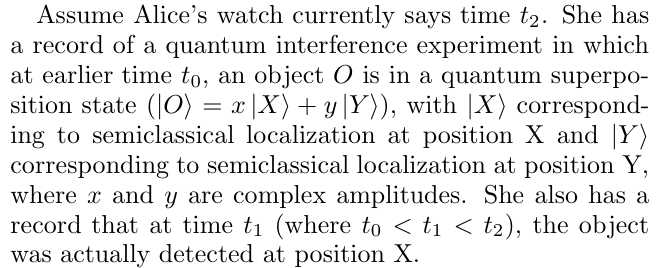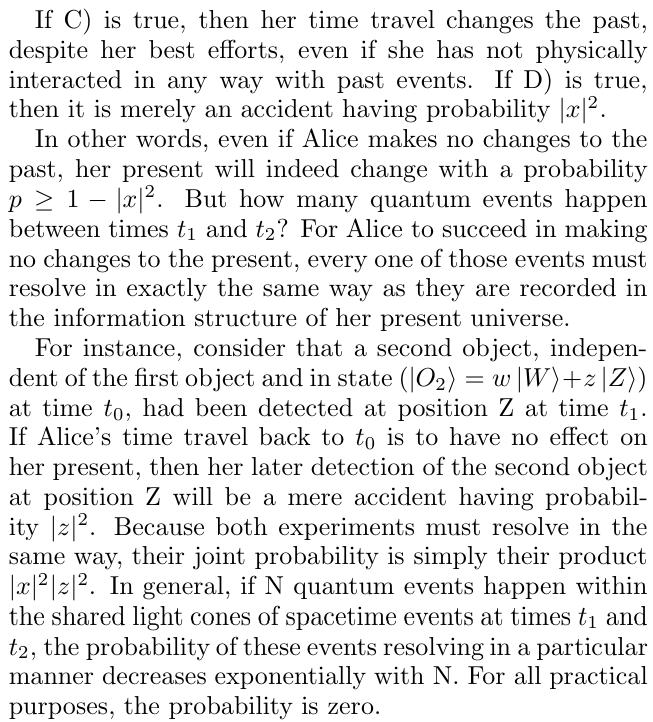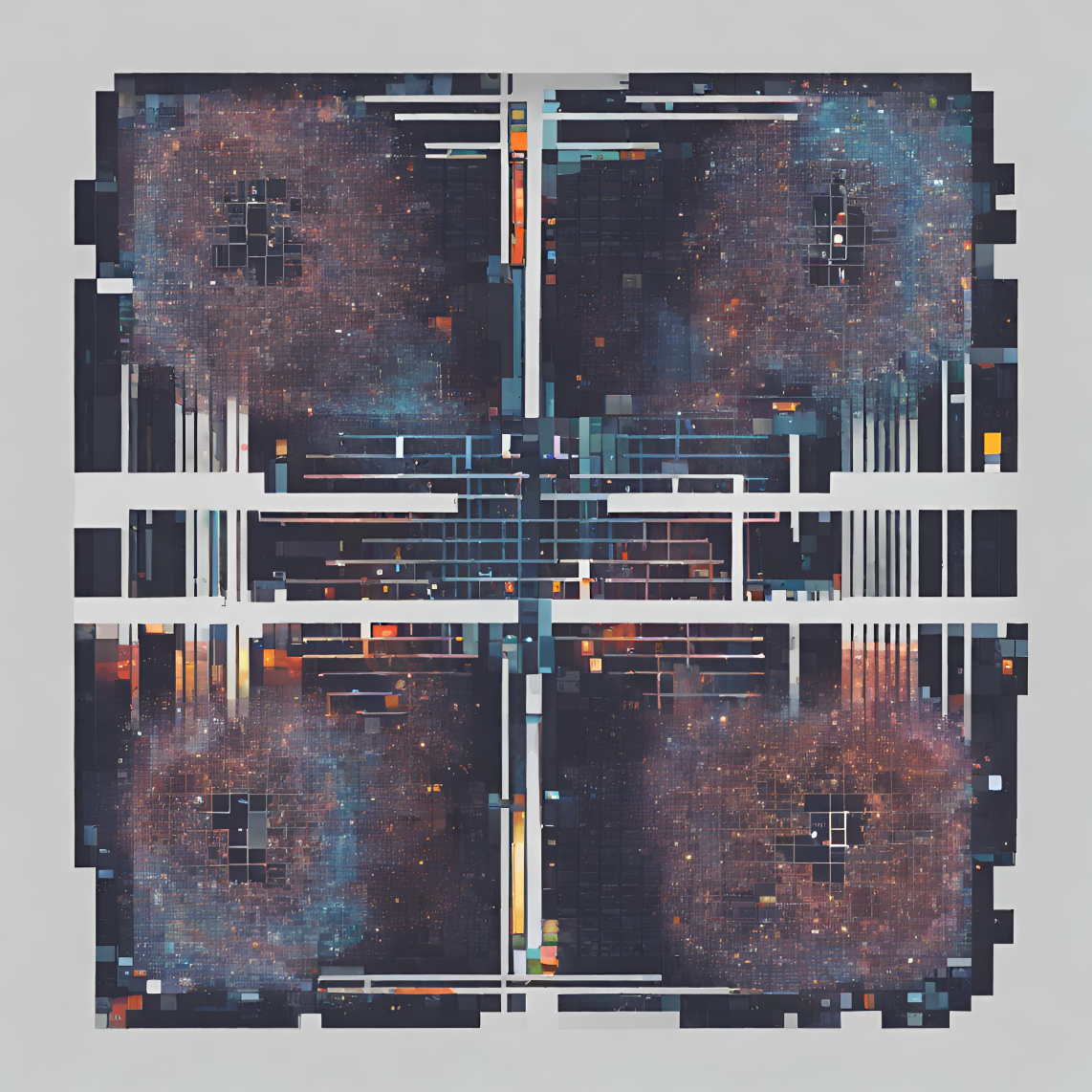Author:
(1) Andrew Knight, J.D. ([email protected]).
Table of Links
IV. FALSE ASSUMPTION

Assume it is possible for Alice to travel backward to time t0 to later witness the outcome of the quantum interference experiment. She intends to make no changes at all, particularly to the experiment.4 What is the state of the object O when she “arrives” at time t0? There are only two possibilities:
• A) She will with certainty detect the object at position X at time t1.
• B) She will not with certainty detect the object at position X at time t1.

If B) is true, then it is possible that she may detect the object at position Y at time t1. If so, there are only two possibilities:
• C) She detects the object at position Y at time t1.
• D) She detects the object at position X at time t1.

Therefore, time travel into the past, even with ostensibly zero changes to the past, would guarantee changes to the present. Eq. 1 is false. Because the possibility of time travel into the past depends on the unidentified assumption that Eq. 1 is true, time travel is not possible. More importantly, Eq. 1 has been shown false on purely logical grounds[5], which means that the possibility of time travel is inherently self-contradictory and is not subject to empirical verification or falsification. To the extent that it continues to be treated as the subject of scientific inquiry, time travel is pseudoscience.
This paper is available on arxiv under CC BY 4.0 Deed license.
[4] This is another untenable assumption. Just as her very presence at time t0 influences her environment via her body’s interactions with photons and air molecules, the timelike separation between her presence at t0 and the detection event at t1 requires, quantum mechanically, that she will affect the experiment, for two reasons. First, in a process limited by the speed of light, there is some finite probability that one or more particles that Alice’s body has affected will then affect the object’s superposition state prior to detection at position X or Y. Second, in a process not limited by the speed of light, particles affected by Alice’s body may already be entangled with the object and/or its measuring device such that changes to those particles instantaneously change the quantum amplitudes relevant to the experiment.
[5] One might object that the argument depends on the truth of quantum mechanics, although all serious proposals for time travel and closed timelike curves in the physics literature take the veracity of quantum mechanics as a given anyway.

